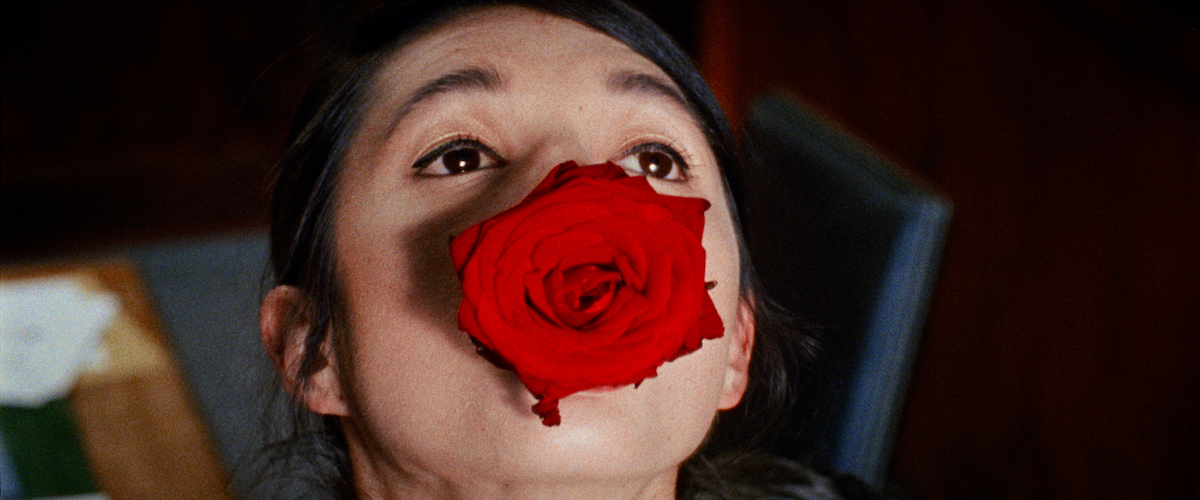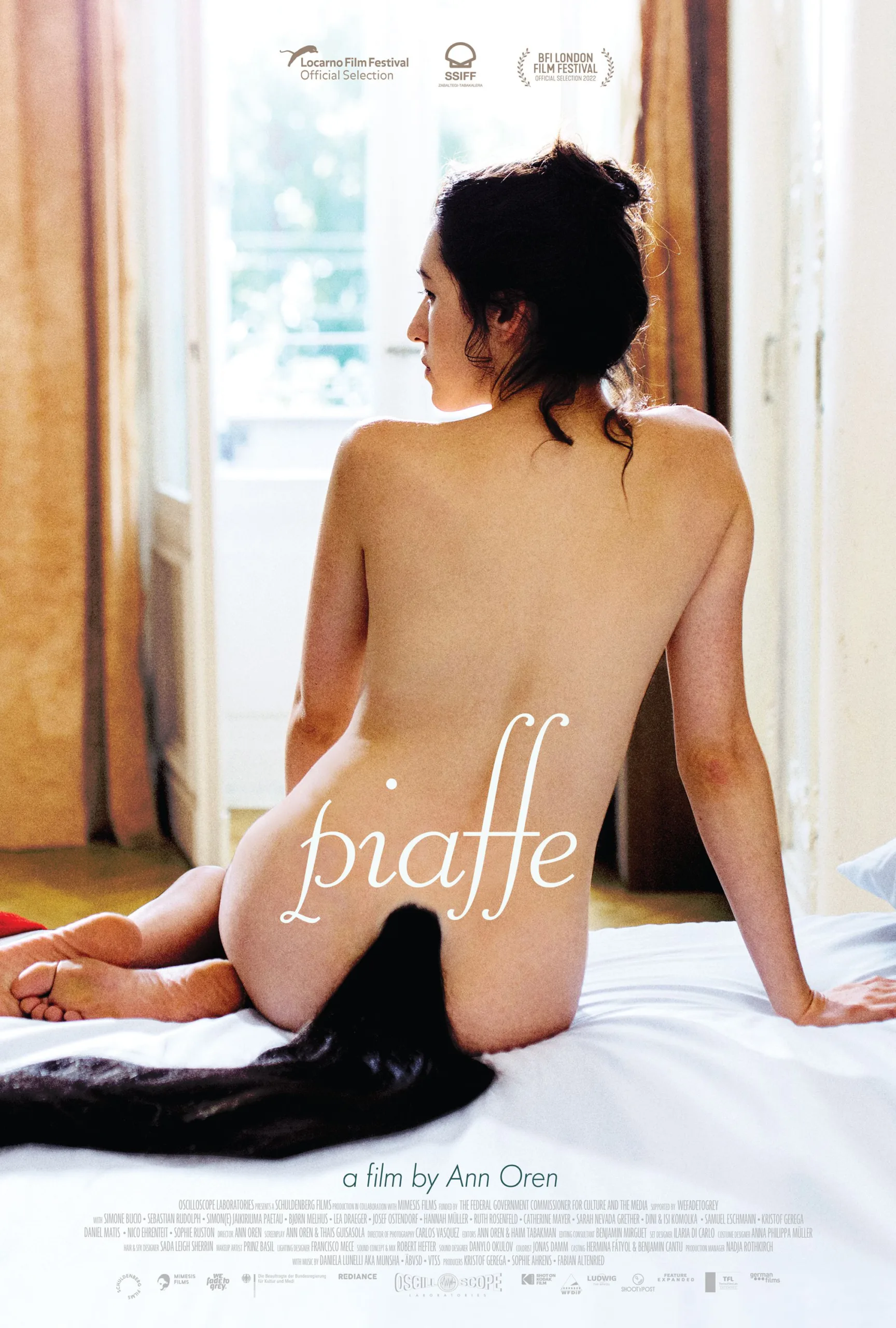This movie’s title describes a particular kind of equine gait in dressage. We get to see a version of this in a kind of film-within-a-film in this intriguing picture directed by Ann Oren (who co-wrote the script with Thais Guisasola). The work is a commercial, actually, for an anti-depressant. Which at first depicts a horse acting moody and tetchy and then shows it working in perfect, beautiful piaffe tandem with its trainer/rider (at whom the animal had been snapping) in an implicit demonstration of the anti-depressant’s effectiveness. Using a horse to show off the efficacy of a pharma product for humans seems a little odd. But the actual world we live in contains mini-musical TV spots extolling the virtues of semi-self-administered colon cancer screenings, so …
This is the kind of movie “Piaffe” is: one that mostly poises its absurd surreality at the edge of what’s plausible in contemporary everyday life until it moves into unprecedented physical mutations.
The vibrantly colorful movie begins in a kind of medias res, as a phone rings. The spectacularly nervous Eva picks it up and doesn’t speak into its receiver. Someone on the other line wants to know where his “sound” is. Eva’s living quarters contain a large room that’s a mini-soundstage, one filled with props and devices (a box filled with sand and a variety of footwear) consistent with the work of a foley artist. Eva is also the attendant, elsewhere, of a room containing a room-size kinetoscope, one where a local botanist comes to look at slides of various plants unfurling into bloom. The movements of the plants as they grow correspond to a later obtrusion, as it happens.
We learn that Eva, the enigmatically gorgeous Simone Bucio, is not herself an actual foley artist—her sister, Zara, is. And Zara’s in a mental hospital, or an Ionesco/Monty Python idea of a mental hospital, where a menacing nurse often blocks Eva’s access to her kin. While Zara recuperates from a breakdown, Eva tries to do her job and is upbraided by the pharma ad’s director (who wears a platinum Moe Howard wig, as one does), who instructs her to go out and observe animals.
Eva does, and she gets so much out of it that she begins to grow a horse’s tail and eventually does so to completion. Her new accessory emboldens her, and the tiny, lithe, formerly shy girl soon demands vodka at a local disco with such force she winds up breaking a glass. And, upon applying crimson-red lipstick, she makes her once-hidden desire known to the botanist, who responds in the affirmative, showing a great facility for knots as he ties and trains Eva. The scene in which she swallows a rose stem and holds the flower perfectly still outside her mouth is something to see.
Director Oren is a visual artist who previously made a documentary featuring herself exploring the limits of cosplay. The scenario of “Piaffe” explodes those limits. It gathers in other issues, including gender—the actor playing Zara is the non-binary Simon(e) Jaikiriuma Paetau—for a narrative that maintains a stolid demeanor even as it takes the oddest turns. Where these turns lead is arguably indefinite, but getting to the indefinite destination is certainly not dull.
Available in limited theaters starting August 25th.




















